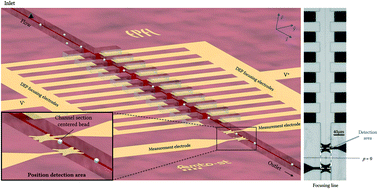Impedance-based real-time position sensor for lab-on-a-chip devices
Abstract
This paper presents the theoretical and experimental development of an integrated position sensor for lab-on-a-chip devices. The interest for single cell analysis is growing. However, this requires monitoring and controlling cell displacements in real time during their journey in the chip. Due to the high number of cells that must be monitored at the same time, classical vision-based sensors are not suitable. This paper aims to present an alternative based on impedance measurement. The position of the cells is obtained from the variation of impedance measured between two electrodes. This technique presents several advantages: the sensor is integrated into the chip, the measurement electrodes are compatible with the fabrication process of actuation electrodes for dielectrophoresis, the sampling time of the sensor is high and the position of the cells can be obtained in real time. This article highlights the concept of position-sensitive impedance sensing. The design of the chip, and in particular of the electrodes, is discussed to improve the sensitivity and repeatability of the measurement. The issue of real-time detection in a noisy environment is solved by using an extended Kalman filter. As a first proof of concept, this article presents experimental validation on a 1D case to determine the longitudinal position of 8.7 μm diameter beads in a channel.



 Please wait while we load your content...
Please wait while we load your content...